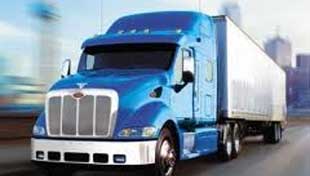| |
|
| |
|
 |
Supply
Chain by the Numbers |
| |
|
| |
- March 14, 2024
|
| |
|
| |
|
| |
|
| |
Shipment Volumes in February Fall Again; Massive Plane to Deliver Wind Turbine Blades; States Pushing Back against SEC CO2 Reporting; OnTrac Ups Delivery Days |
| |
| |
| |
| |
| |
4.5% |

|
| That was the year-over-year decline in the Cass Shipments Index for February, as released as usual from Cass Information Systems this week, based on data from the billions of dollars in freight bills Cass pays for its clients. The index goes across modes, but is heavily weighted towards full truckload freight carriage. While the 4.5% drop versus February 2023 seems significant, it was the smallest decline in ten months. And on a seasonally adjusted basis, shipments were up 2.0% versus January. In terms of truckload rates, the Cass Linehaul Index, which tracks US rates before fuel surcharges and any other accessorials , was down 5.4% year-over-year, but that was the narrowest decline in the past year. |
|
|
|
| |
| |
|
|
|
| That is how many states have filed suit to stop new rules from the Securities and Exchange Commission that will require US companies to report their greenhouse gas emissions, under something the SEC calls “The Enhancement and Standardization of Climate-Related Disclosures for Investors,” as defined in a whopping 886-page document. the states intend to demonstrate the SEC “exceeds the agency’s statutory authority and otherwise is arbitrary, capricious, an abuse of discretion, and not in accordance with law. Petitioners thus ask that this court declare unlawful and vacate the commission’s final action.” The rule would obviously have a major impact on reporting of supply chain-related CO2 emissions from a company’s own operations, but the final rules did not include a requirement for reporting of emissions from its external supply chain activities. |
|
|
|
| |
| |
356 |
|
| That is how many feet long a coming specialized cargo plane designed to move giant wind turbine blades directly to wind farm sites. That is some 127 feet longer than a Boeing 747. The plan for the plane comes from Colorado-based startup Radia , which is designing the gargantuan cargo plane that, if completed, would be the world’s largest aircraft by length and cargo volume. purpose would be to carry wind turbine blades the length of football fields. The blades are currently used only for offshore projects because of transportation limitations. The super-sized blades can’t move by rail or truck and even transporting them offshore requires specialized vessels. Sources say that Radia’s Windrunner would resemble the military C-5 cargo plane. |
| |
| |
| |
| |
| |
|
|
|
|
| |
 |
 |
| |
 |
![]() |
 |
|
| |
 |
Feedback |
|
|
|
![]()
|
No Feedback on this article yet.
|
|
![]() |
|
|
|
![]() |
 |
![]() |
 |
|
| |